Fashion has always been a canvas for creative expression, but some designs transcend aesthetics and venture into the realm of deeper meaning. One such innovative trend is the rise of Anatomy Sweaters, clothing that artistically reflects the internal beauty of the human body. These sweaters are more than just garments; they represent a celebration of human anatomy through design. From illustrating the heart and lungs to showcasing intricate networks of veins and muscles, anatomy sweaters connect fashion with a profound appreciation of the human form. In this article, we will delve into the fascinating world of anatomy sweaters, exploring their origin, significance, design elements, and their impact on both fashion and culture.

The Intersection of Fashion and Anatomy
Fashion has long been a form of personal expression, allowing individuals to project their identity and interests through clothing. While fashion trends often revolve around aesthetics, anatomy sweaters invite a more intimate conversation about the human body. These sweaters are designed with intricate depictions of internal organs and biological systems, offering a unique way to merge art, science, and self-expression.
The idea behind anatomy sweaters is both bold and thought-provoking. They celebrate the human body, not just from the outside, but from within. The purpose is to remind us that beneath the surface, our bodies are a marvel of complexity, functionality, and beauty. Wearing an anatomy sweater is more than just a fashion statement—it’s an appreciation of the hidden systems that keep us alive and thriving.
In this article, we will explore the origin and evolution of anatomy sweaters, the artistic process behind their creation, and the cultural implications they hold. By diving into this unique fashion movement, we hope to uncover the deeper significance of why these designs are resonating with people today.

The Origins of Anatomy Sweaters
A New Frontier in Wearable Art
The concept of anatomy sweaters originated from the intersection of art, science, and fashion. Initially, the trend was rooted in the educational world, with medical students and educators seeking ways to make learning about human anatomy more engaging and accessible. These sweaters allowed the wearer to become a living anatomy chart, offering a visual and tactile learning experience. Over time, what began as a practical tool evolved into a fashion trend that appealed to a broader audience.
Artists and designers quickly realized the potential of using the human body as a canvas for creative expression. The anatomical details of the heart, lungs, muscles, and veins became artistic elements that could be woven into fabric, transforming scientific illustrations into wearable art. What started as a niche concept in educational circles eventually spread to fashion enthusiasts who saw the beauty in the human body’s inner workings.
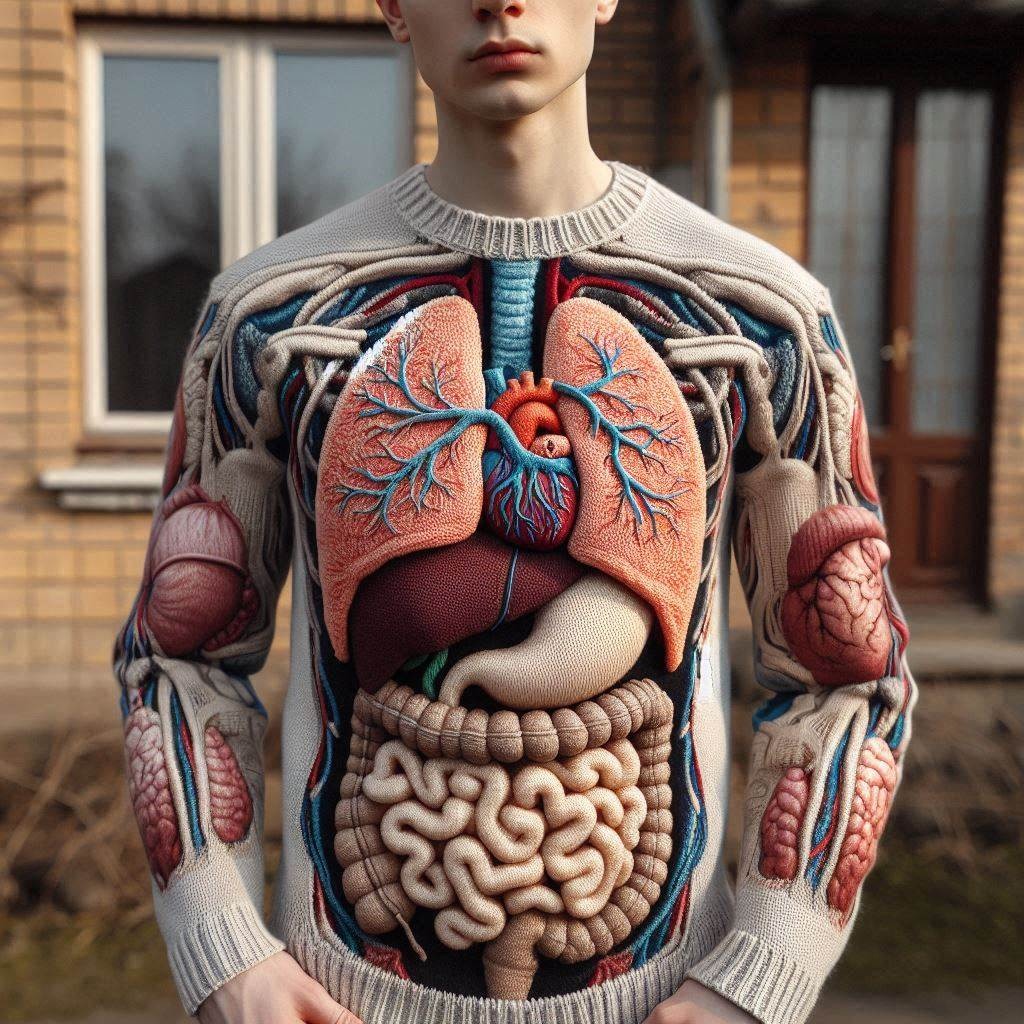
Blending Science and Fashion
The rise of anatomy sweaters can also be traced to a broader cultural shift that embraces science and curiosity about the human body. With increasing interest in health, wellness, and body positivity, people have become more open to celebrating their bodies in all forms. This growing appreciation for anatomy, coupled with a fascination for unique fashion, led to the popularity of these sweaters.
In many ways, anatomy sweaters are the embodiment of this fusion between science and fashion. They invite wearers to take pride in their internal structure, to be mindful of how their bodies function, and to embrace the beauty that lies beneath the skin. They challenge the notion that beauty is only skin-deep by bringing attention to the inner mechanisms that make life possible.

The Design Process Behind Anatomy Sweaters
The Art of Detailing Internal Organs
Creating an anatomy sweater is no simple task. Designers must balance artistic creativity with anatomical accuracy. The process begins with research—studying medical illustrations, anatomical diagrams, and even consulting with medical professionals to ensure that the designs reflect real human biology. The goal is not only to create a visually appealing sweater but also to educate and inspire curiosity about the human body.
One of the most common design elements in anatomy sweaters is the depiction of vital organs. The heart, lungs, and digestive system are often represented, each organ carefully illustrated with intricate details. Some designs focus on the skeletal system, while others may highlight the muscle structure or nervous system. The placement of these anatomical illustrations on the sweater must align with the actual location of the organs within the human body, adding an element of realism and anatomical integrity.

Materials and Techniques
The choice of materials is another crucial aspect of designing anatomy sweaters. High-quality fabrics like wool, cotton, and blends are commonly used to ensure that the sweaters are comfortable, durable, and capable of showcasing detailed designs. Knitting and embroidery techniques play a significant role in achieving the level of intricacy needed to represent internal organs accurately.
Knitted designs allow for a more abstract representation of anatomy, where the organs are stylized but still recognizable. Embroidery, on the other hand, offers a more precise and detailed approach, enabling designers to create intricate patterns that mirror the complexity of the human body. Some sweaters incorporate mixed media, such as beads or metallic threads, to add texture and depth to the designs, enhancing the overall effect.
Color Palettes and Symbolism
Color plays a significant role in anatomy sweater design. Designers often choose colors that reflect the natural tones of the body’s internal structures. Reds and pinks are used to represent blood vessels and organs like the heart and lungs, while blues and purples depict veins and arteries. Muscles may be illustrated with shades of brown and red, while bones are often represented in white or ivory tones.
The use of color not only adds visual appeal but also enhances the symbolic nature of the design. For example, a vibrant red heart on a sweater might symbolize love, life, and vitality, while the depiction of the lungs in soft blues and greens could evoke feelings of calmness and breath. In this way, anatomy sweaters become more than just a visual representation of internal organs—they also carry deeper meanings and emotions connected to the body’s functions.
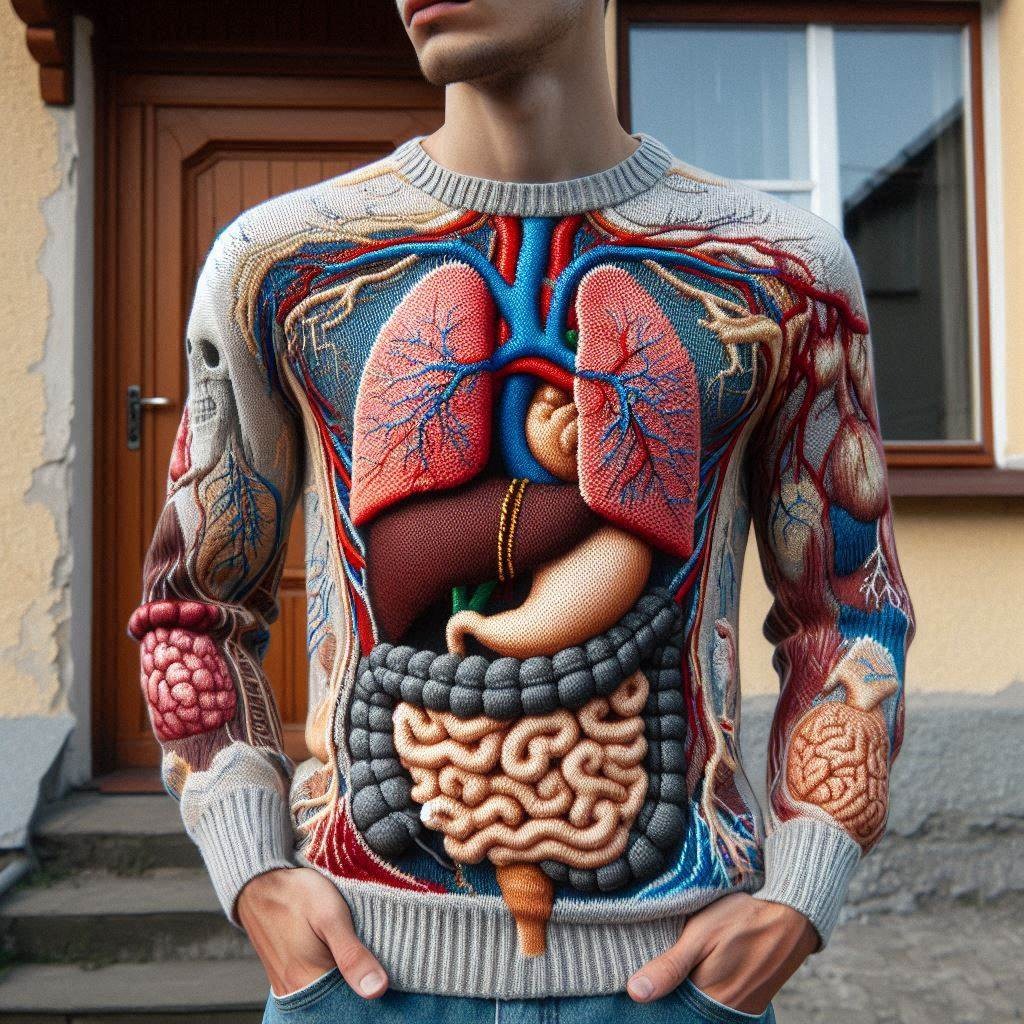
Cultural and Societal Impact of Anatomy Sweaters
Positivity and Acceptance
One of the most significant cultural impacts of anatomy sweaters is their contribution to the body positivity movement. By wearing a sweater that proudly displays the internal organs, individuals are making a statement about body acceptance. These designs encourage people to appreciate their bodies for more than just outward appearances, fostering a deeper connection to their physical selves.
In a world where body image issues are prevalent, anatomy sweaters serve as a reminder that beauty is not confined to the external. They invite wearers to embrace their whole selves, inside and out. This message resonates particularly with those who have experienced body shaming or insecurities, as anatomy sweaters promote the idea that every part of the body—both visible and hidden—deserves to be celebrated.
Challenging Fashion Norms
Anatomy sweaters also challenge traditional fashion norms. Mainstream fashion often prioritizes trends that emphasize external beauty and conformity to societal standards. However, anatomy sweaters break away from this mold by prioritizing individuality and intellectual curiosity. They appeal to those who are unafraid to stand out, who value uniqueness, and who are interested in blending science with fashion.
In this sense, anatomy sweaters represent a counterculture within the fashion industry. They challenge the idea that clothing must always be about looking attractive in a conventional sense and instead propose that fashion can be a medium for storytelling, education, and personal expression.
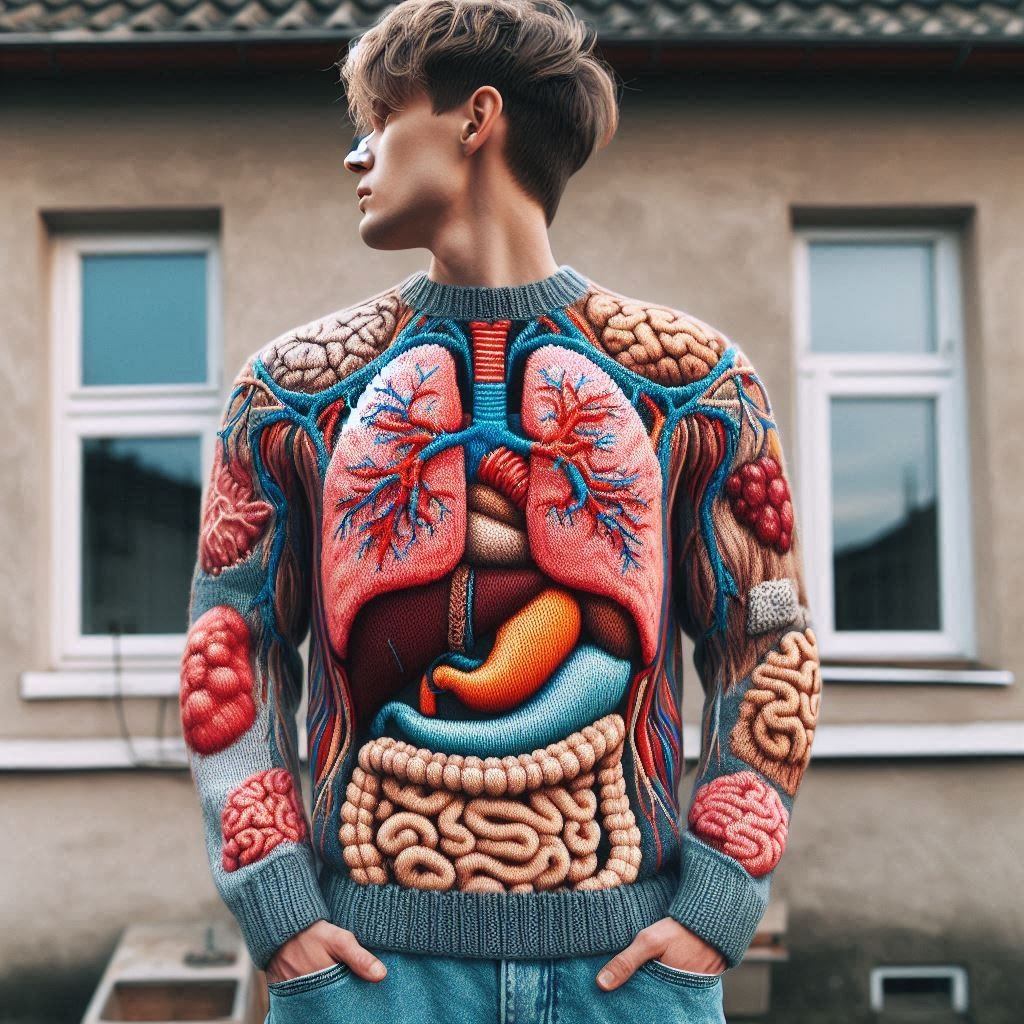
The Role of Anatomy Sweaters in Education
Beyond their aesthetic appeal, anatomy sweaters have found a place in educational settings. Many educators have adopted these sweaters as teaching tools, using them to illustrate lessons on human biology in a more engaging and interactive way. The visual and tactile nature of the sweaters allows students to explore anatomy in a hands-on manner, making the learning process more enjoyable and memorable.
Anatomy sweaters have been embraced by science communicators, medical professionals, and educators who see the potential for fashion to become an educational medium. This trend reflects a broader movement toward using creative approaches to make learning more accessible and exciting, particularly in fields like science and medicine, which can sometimes feel intimidating to students.
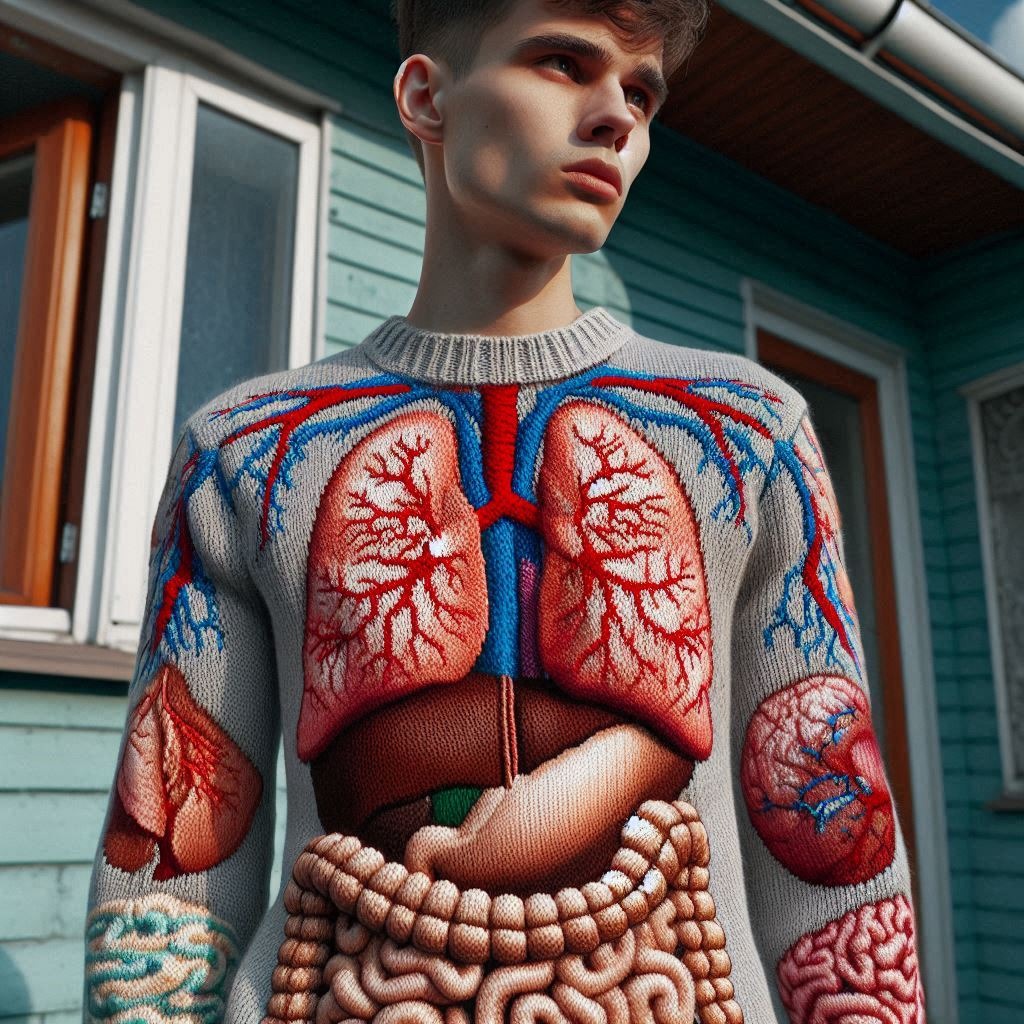
The Fashion Appeal: Anatomy Sweaters as Statement Pieces
Bold and Unconventional Style
For fashion enthusiasts, anatomy sweaters are the ultimate statement piece. They are bold, unconventional, and thought-provoking, making them perfect for those who want to make an impression. The unique combination of scientific accuracy and artistic design allows wearers to showcase their personality and interests in a way that is both stylish and meaningful.
These sweaters often become conversation starters, drawing attention and curiosity from others. Whether worn at a science conference, a casual outing, or even as a quirky addition to a formal wardrobe, anatomy sweaters are guaranteed to make an impact. Their distinctiveness sets them apart from typical fashion items, offering a sense of individuality and creativity that resonates with those who value self-expression through clothing.

Appeal to Science and Art Lovers Alike
Anatomy sweaters hold a unique appeal for individuals who are passionate about both science and art. For scientists, medical professionals, and students, these sweaters represent a connection to their field of study and work. For artists and creatives, they offer a new medium for exploring the human form and translating it into wearable art.
This crossover appeal between science and art makes anatomy sweaters a favorite among those who appreciate interdisciplinary connections. The sweaters blur the lines between fashion, education, and creative expression, making them a versatile and multi-dimensional addition to any wardrobe.
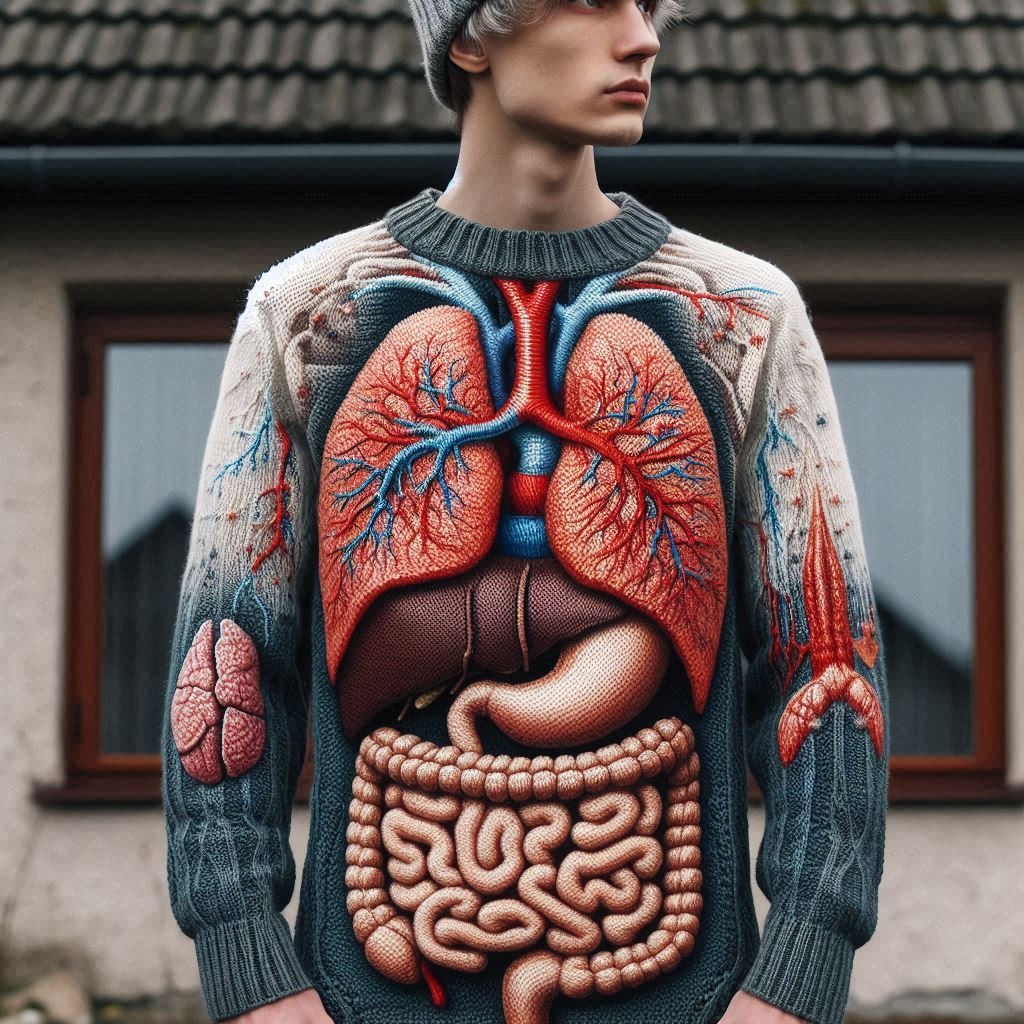
Celebrating the Beauty Within
Anatomy sweaters are more than just fashion—they are a celebration of the human body in all its complexity and beauty. Through intricate designs that reflect internal organs and biological systems, these sweaters invite us to look beyond the surface and appreciate the incredible mechanisms that keep us alive. They challenge traditional fashion norms, promote body positivity, and even serve as educational tools.
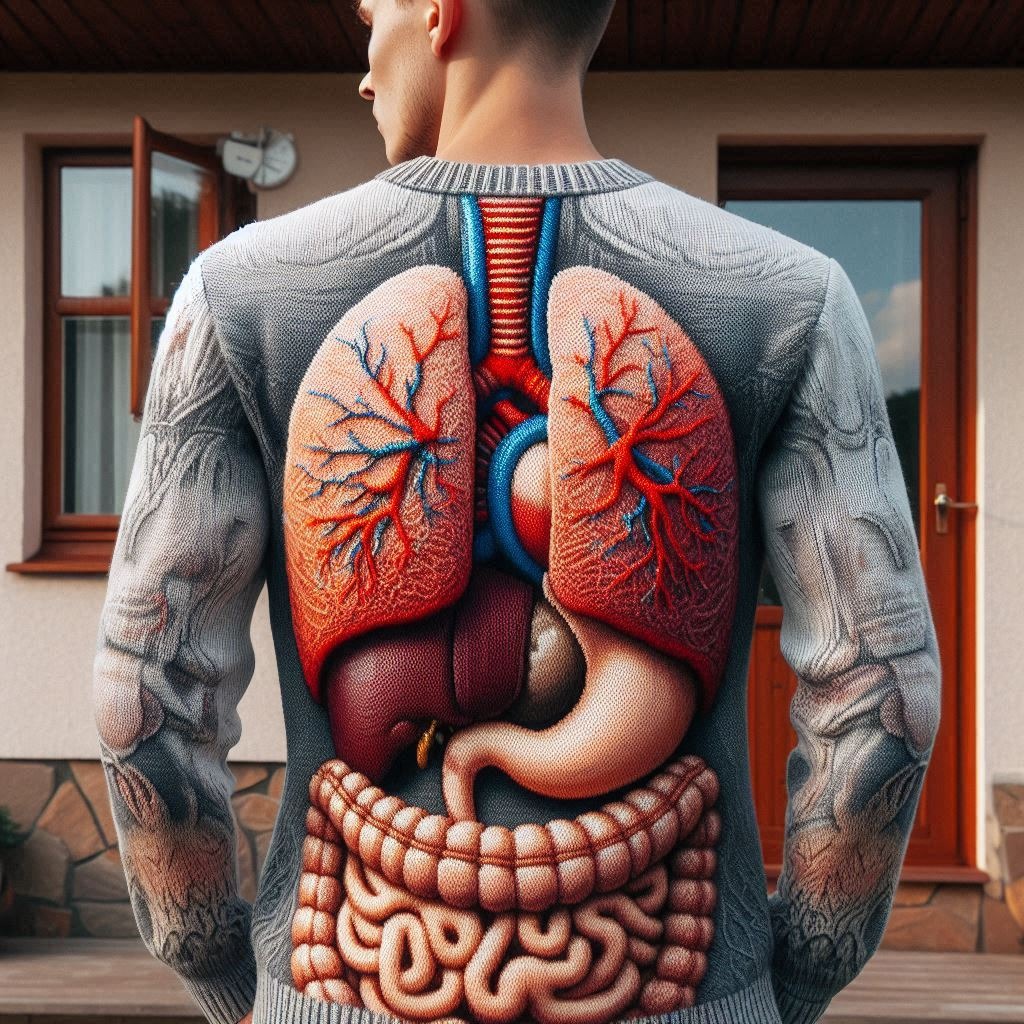
As fashion continues to evolve, anatomy sweaters stand out as a testament to the power of creativity and curiosity. They remind us that fashion can be more than just clothing—it can be a medium for exploring deeper meanings, for celebrating our bodies, and for expressing our individuality. Whether worn for their aesthetic appeal, their educational value, or their symbolic significance, anatomy sweaters







